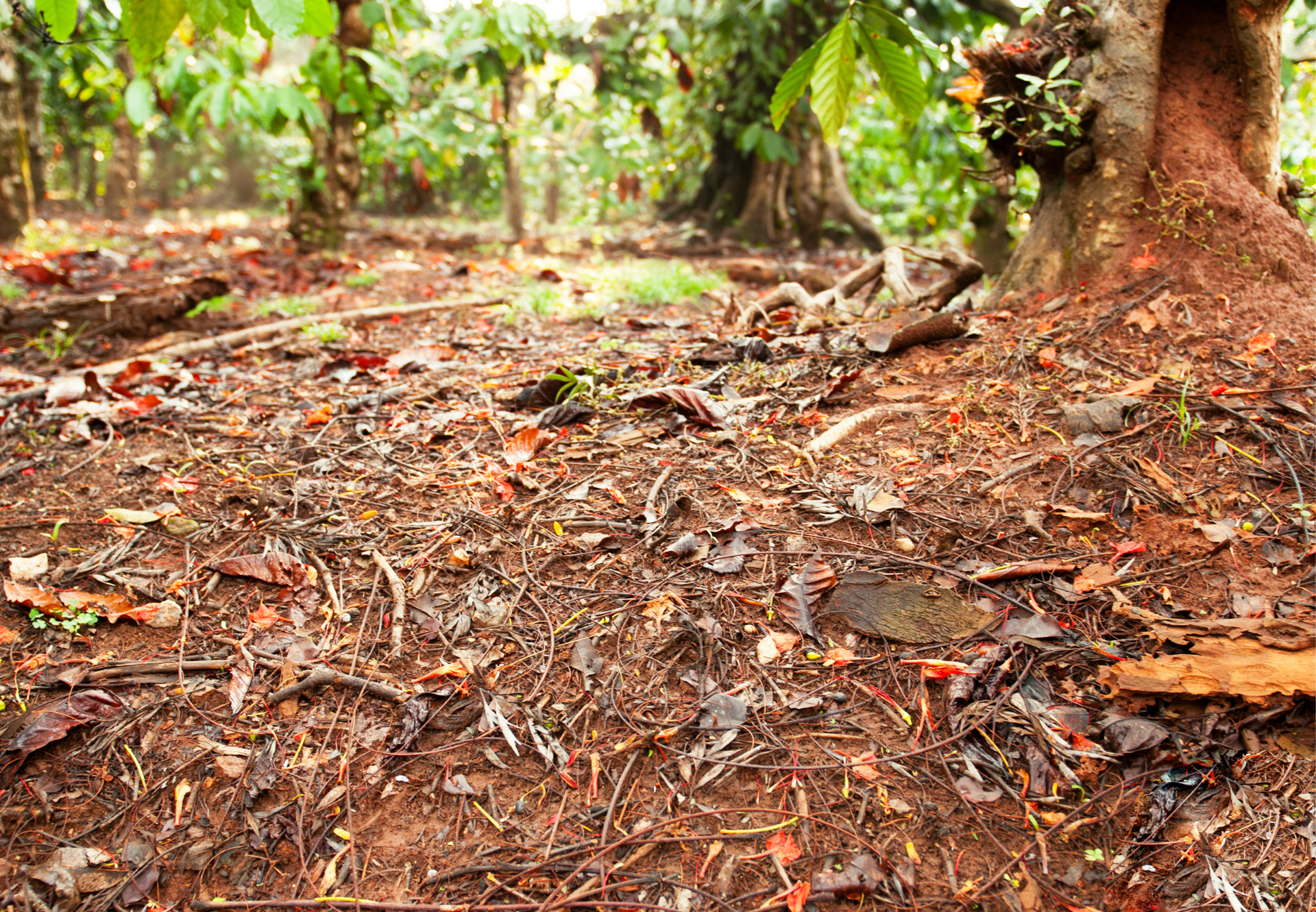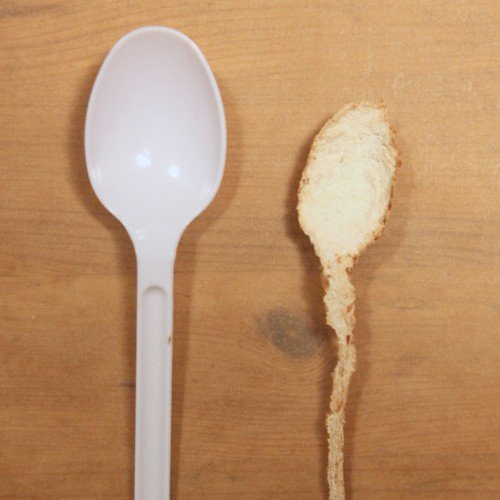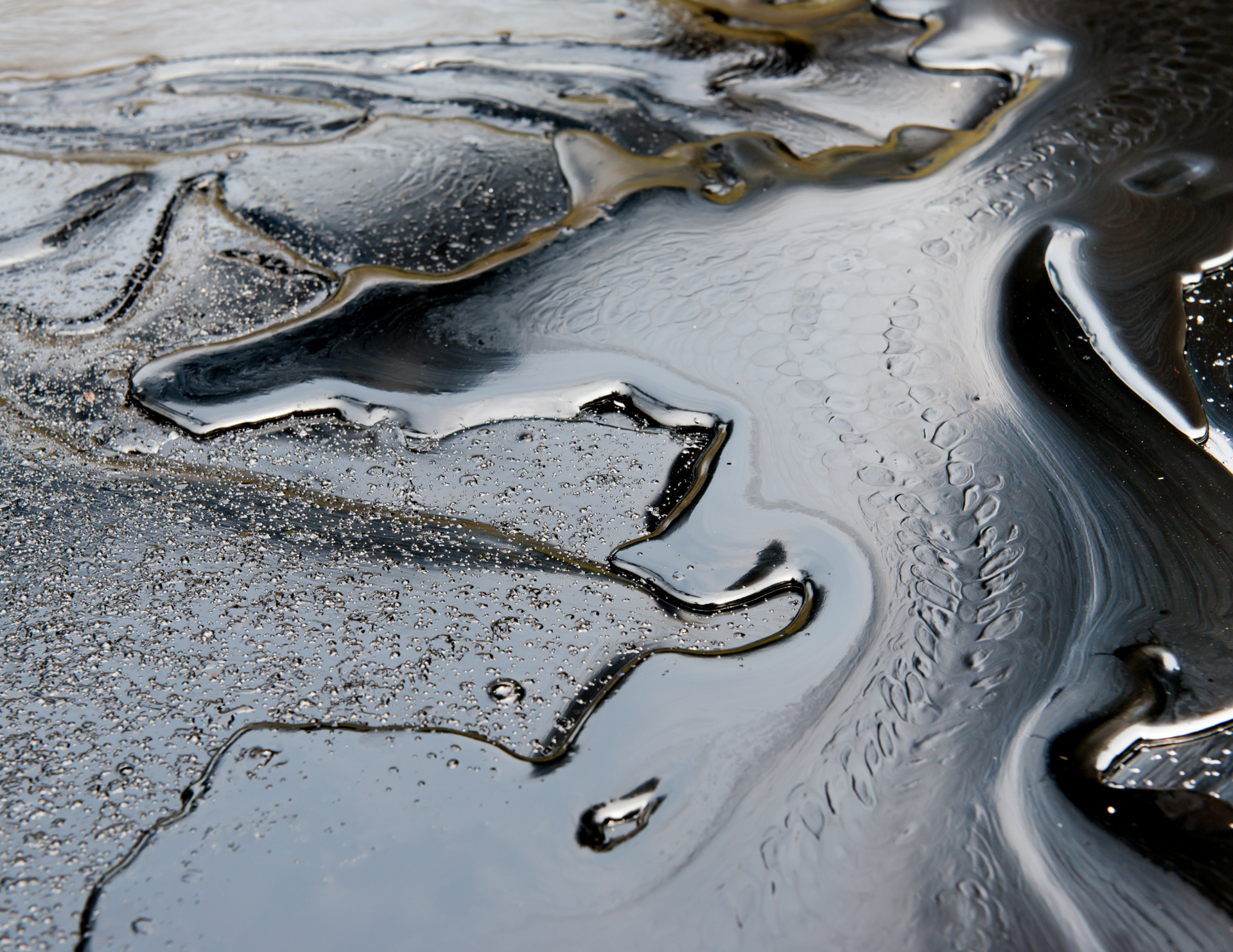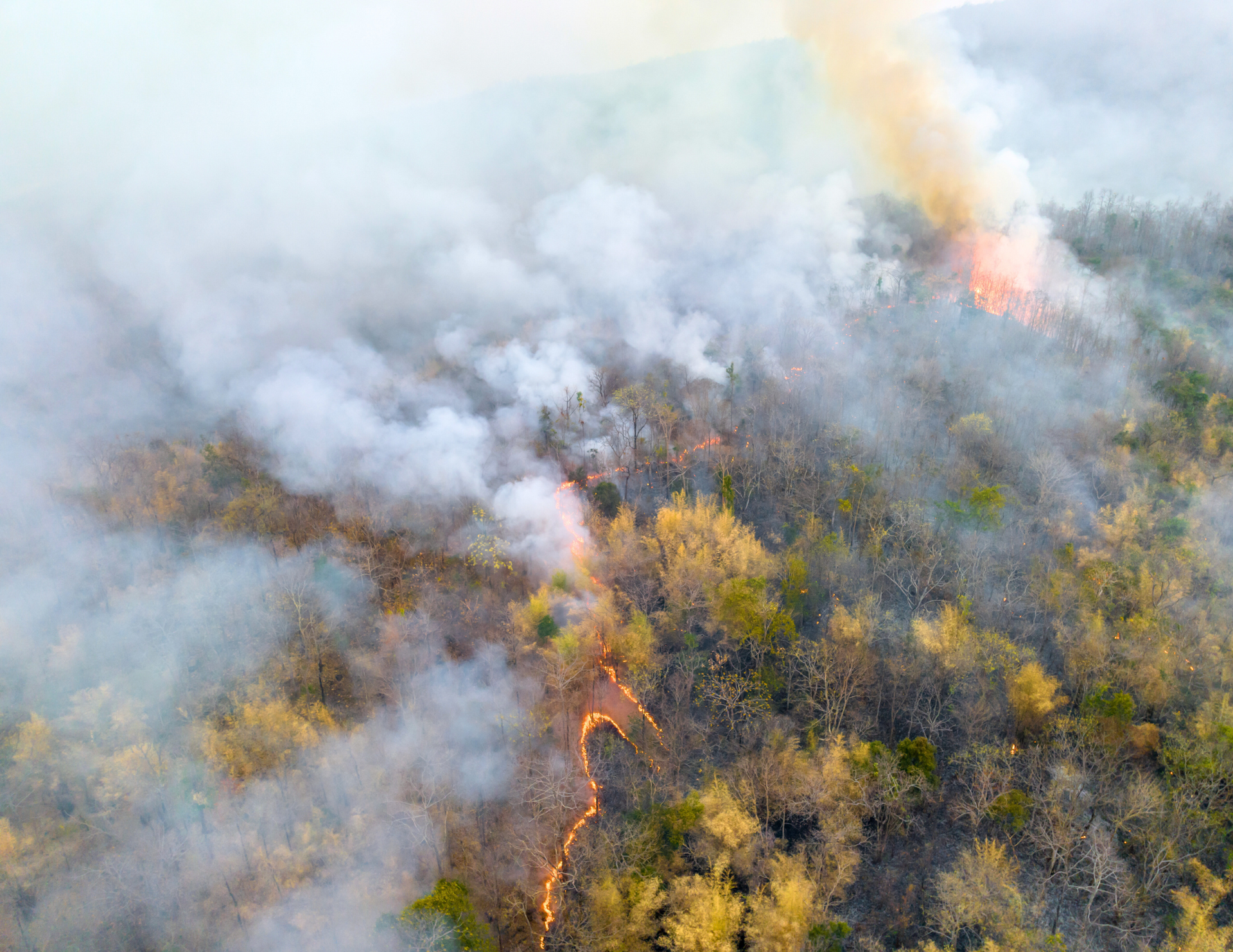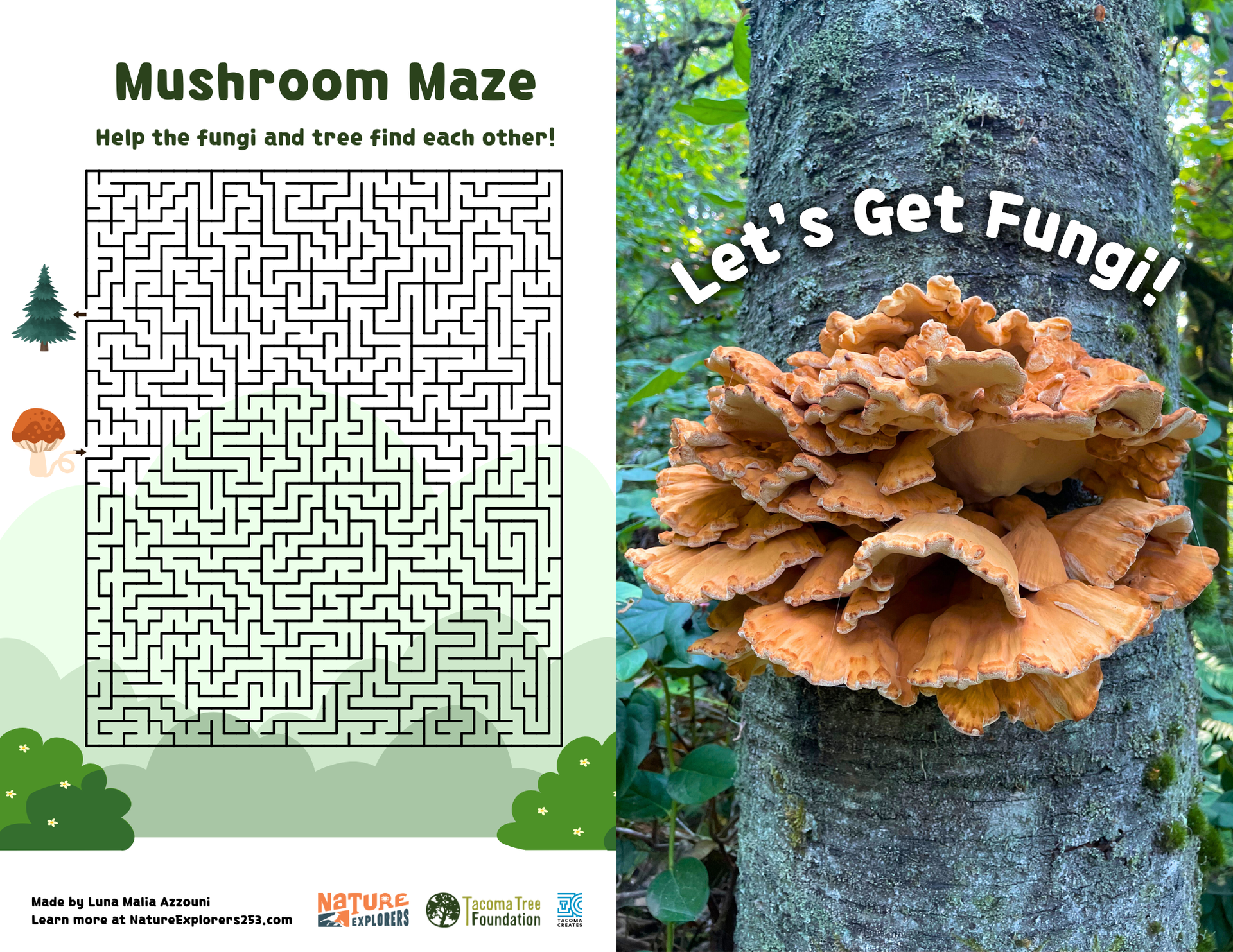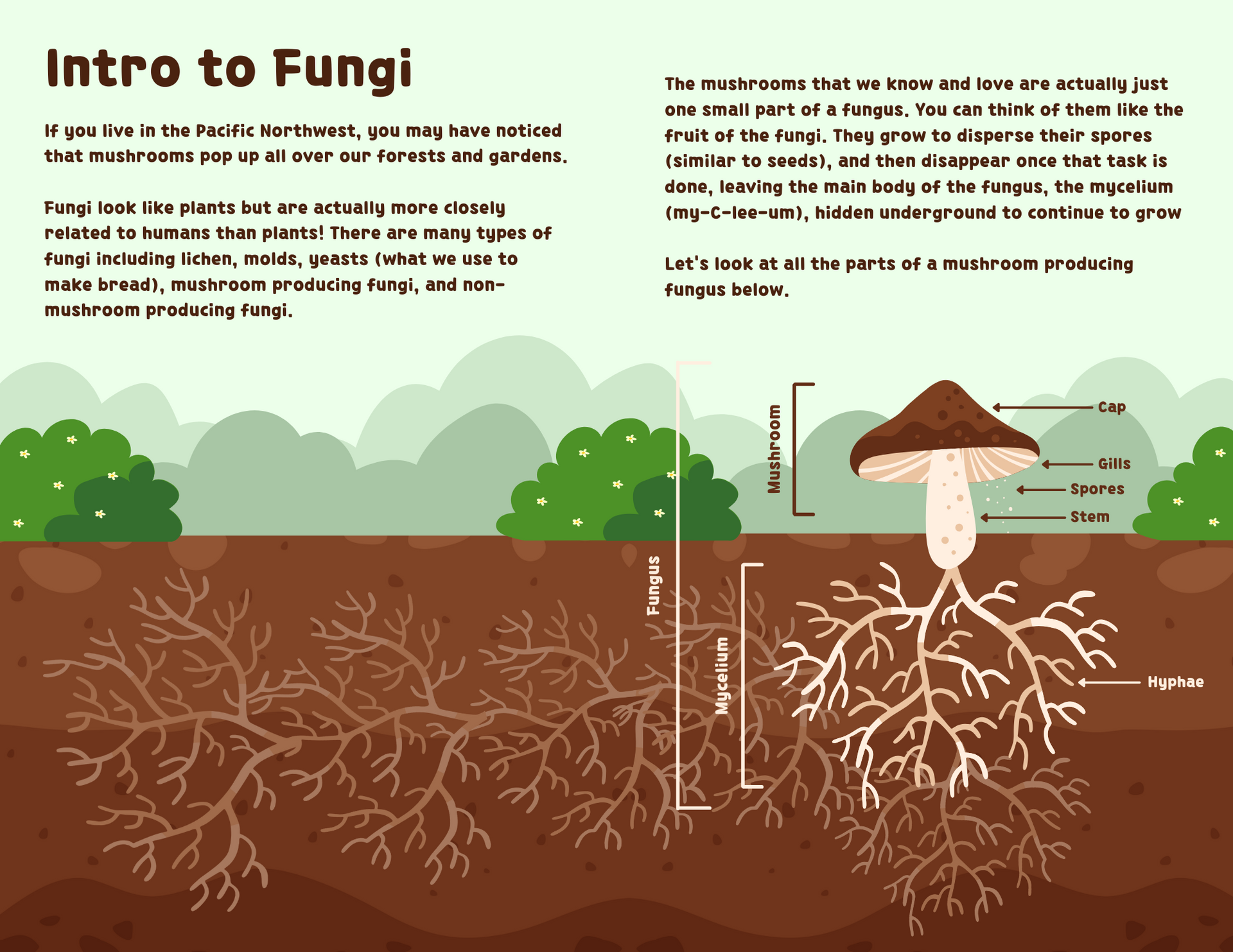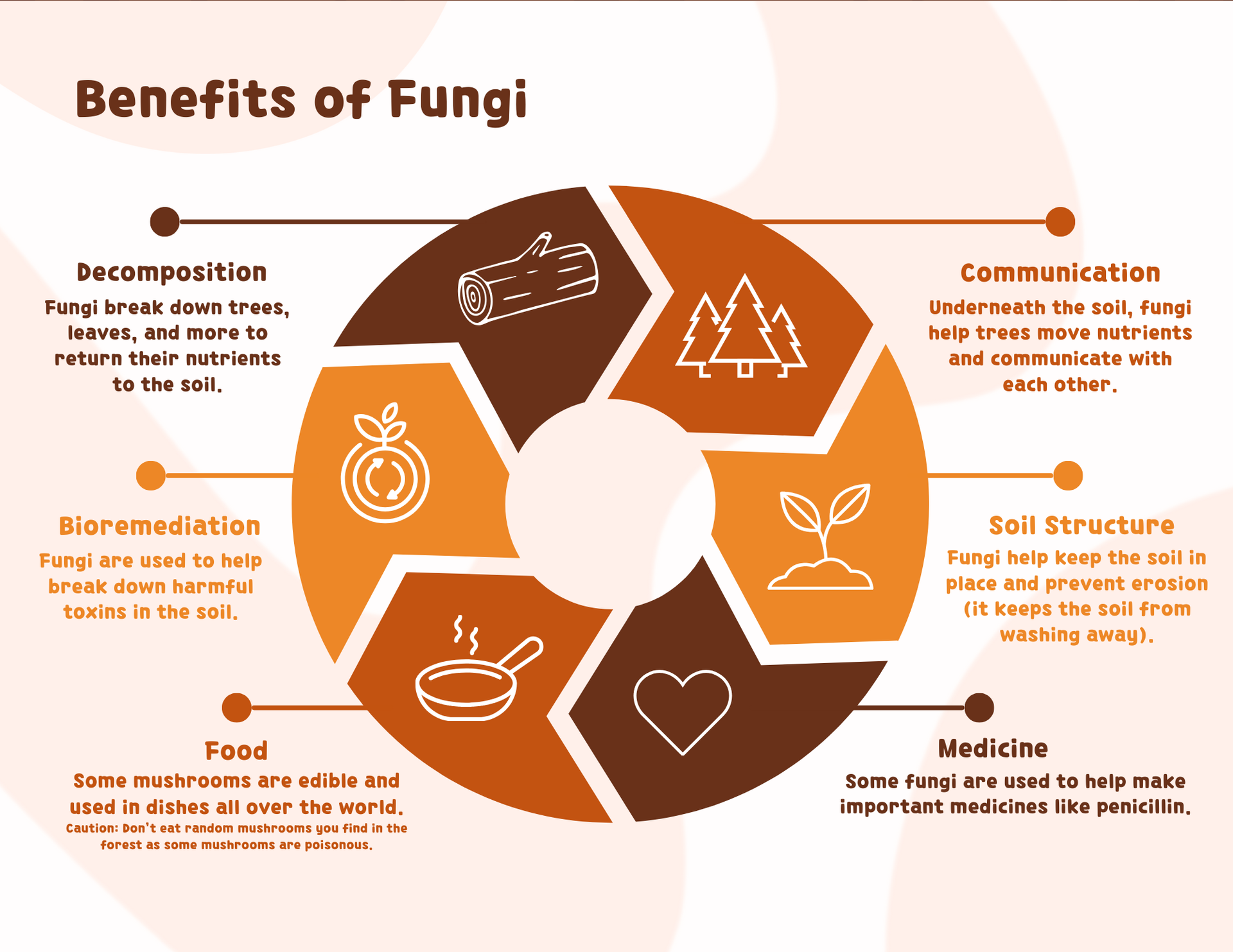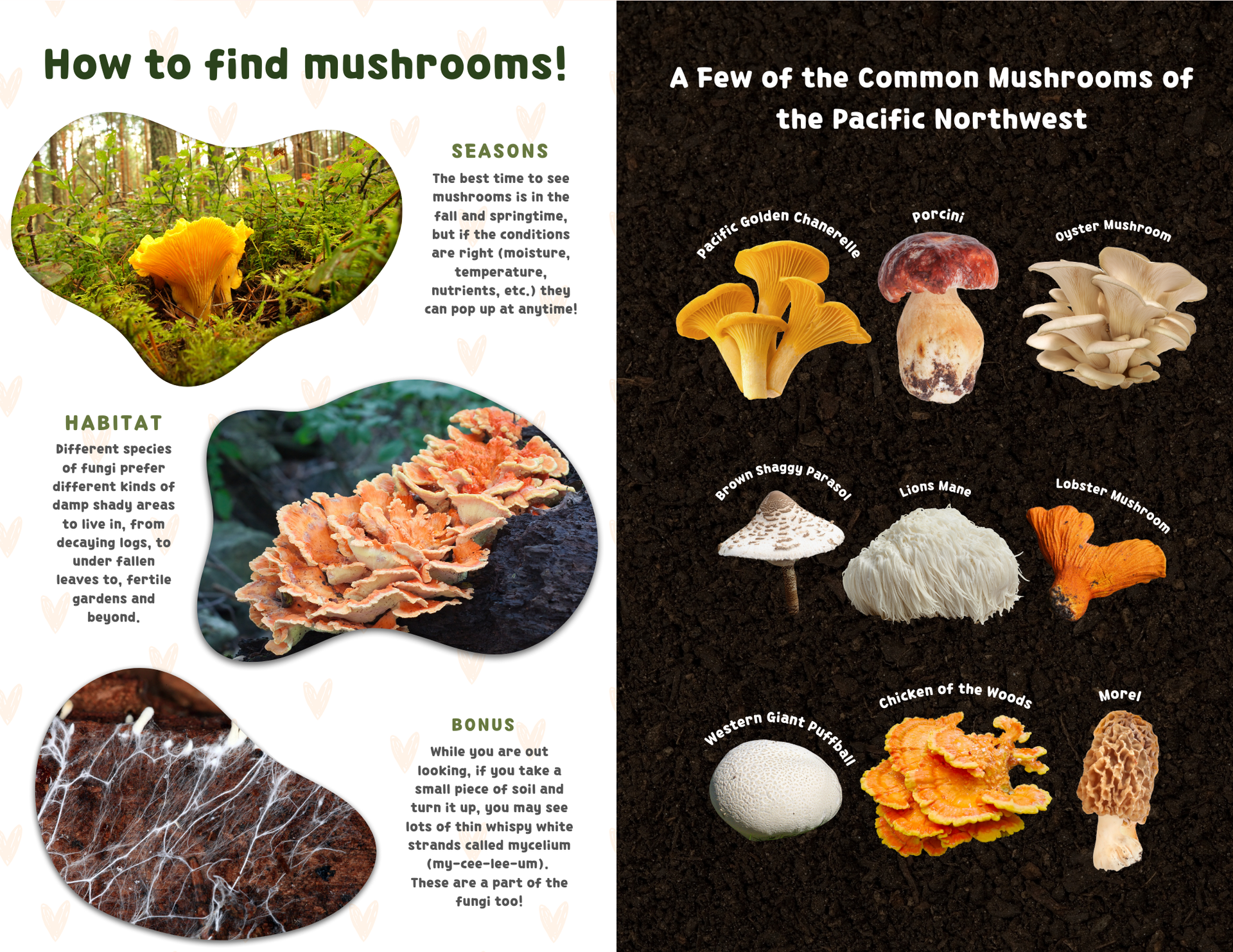Let's Get Fungi
In our rainy part of the world, mushrooms pop up all over our forests and gardens. Mushrooms are parts of fungi, and they look like plants but are actually more closely related to humans than plants! There are estimated to be millions of types of fungi, but only a small percentage of them have been identified so far. There are many types of fungi including lichen, molds, yeasts (what we use to make bread), mushroom producing fungi, and non-mushroom producing fungi.
The mushrooms that we know and love are actually just one small part of a fungus. You can think of them like the fruit of the fungi. They grow to disperse their spores (similar to seeds), and then disappear once that task is done, leaving the main body of the fungus, the mycelium (my-C-lee-um), hidden underground to continue to grow.
Let's look at all the parts of a mushroom producing fungus below.

The Gifts of Fungi
Communication
They also play a major role in communication
Decomposers
One of the biggest role fungi play in the forest is breaking down trees, leaves, and other matter and returning those nutrients to the soil. Fungi can break down thick cell walls made of lignin in trees, something that few creatures are able to do. Fungi absorb lignin and break it down into simple forms that other creatures in the soil can use. Fungi return the nutrients to the soil like Nitrogen, Phosphorus, and Potassium.
Mycoremediation (my-co-rem-E-D-A-shun)
Because fungi are so good at breaking down complex compounds, some types of fungi are also able to eat harmful contaminants in our environment and transform toxins into less toxic compounds.
Activities
Can you find mushrooms?
With your adult, print this pocket guide and see if you can spot some mushrooms!
Common types of mushrooms in the Pacific Northwest
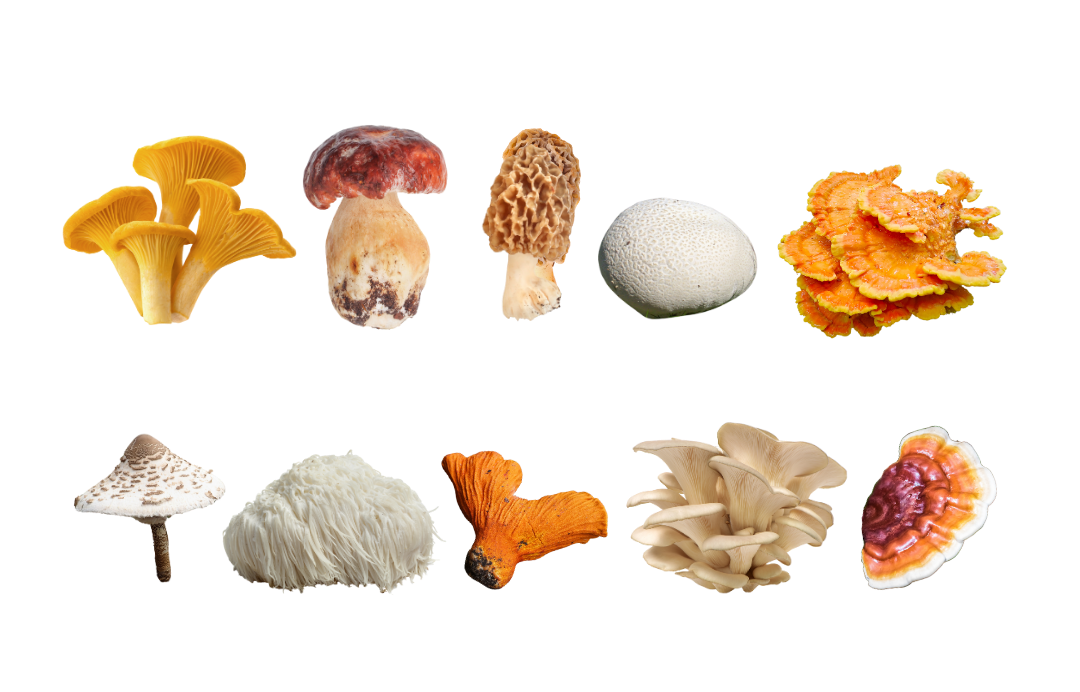
Word Search
Click and drag on the letters below to highlight the words you have found!
More puzzles at webwordsearch.com
How to make some art with mushrooms!
Come take a walk with us!

Come take a walk with us at the Tacoma Tree Foundation and search for mushrooms!
Our next walk is at Point Defiance's NW Native Plants Garden on May 17th at 10:30am.
Bats flying at sunset


